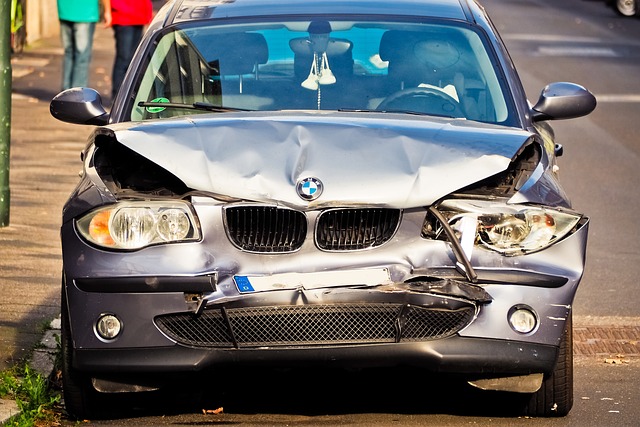Comprehensive car insurance offers broad protection against various risks, including accidents, theft, vandalism, natural disasters, and more. It covers vehicle damage, personal belongings, and medical expenses for drivers and passengers. This type of coverage is essential for peace of mind and financial security, shielding against unexpected events like storms, floods, or animal collisions. Understanding what's covered and comparing policies helps in making an informed decision that balances protection and cost-efficiency. "What Does Comprehensive Car Insurance Cover?" is key to ensuring adequate safeguard for vehicles and drivers.
Discover the benefits of affordable comprehensive car insurance – a powerful protective shield for your vehicle. This article guides you through understanding what does comprehensive car insurance cover, exploring key components, and identifying situations that demand such protection. Learn about diverse policy types, selection tips, cost-benefit analysis, and real-life scenarios where comprehensive coverage shines. Get equipped to make informed choices for peace of mind on the road.
Understanding Comprehensive Car Insurance: A Deeper Look

Comprehensive car insurance is a type of coverage that goes beyond the standard liability and collision policies. It offers protection against a wide range of potential risks, providing peace of mind for drivers. So, what does comprehensive car insurance cover? In simple terms, it covers damages to your vehicle that are not caused by accidents or collisions, such as theft, vandalism, natural disasters (like storms or floods), and even damage from falling objects.
This type of insurance also typically includes coverage for personal belongings left in the vehicle, as well as medical expenses for you and your passengers if anyone is injured during an incident covered under the policy. It’s a complete package that ensures drivers are protected from various unforeseen circumstances, making it a popular choice for those seeking all-around protection for their vehicles and themselves.
Key Components of Comprehensive Coverage

Comprehensive car insurance, often referred to as ‘full coverage’, is a type of policy that goes beyond the standard requirements and offers a wide range of protections for vehicle owners. When it comes to understanding what does comprehensive car insurance cover, you’ll find several key components that make it an attractive option. Firstly, it covers damages to your vehicle resulting from events other than accidents, such as natural disasters (like floods or storms), vandalism, or theft. This ensures peace of mind knowing that unexpected incidents won’t leave you burdened with repair costs.
Secondly, comprehensive coverage includes liability protection, which is crucial. It shields you from financial responsibilities arising from causing damage to others’ property or injuries to them during an accident—even if it’s not your fault. Moreover, it often includes perks like rental car reimbursement when your vehicle is being repaired and medical payments to assist with any injuries sustained by occupants of your car, regardless of who was at fault.
What Situations Require Comprehensive Protection?

In today’s world, having comprehensive car insurance is no longer an option but a necessity. What does comprehensive car insurance cover? It protects against a wide range of unforeseen events that could leave your vehicle damaged or totaled. Situations requiring comprehensive protection extend beyond the standard coverage provided by liability and collision policies. For instance, comprehensive insurance kicks in when your car suffers damage from natural disasters like floods, hurricanes, or earthquakes, which are often excluded from basic policies. Moreover, it covers losses due to theft, vandalism, and even accidental damage caused by animals.
Comprehensive protection also extends to specific circumstances that can be particularly costly. These include damage resulting from glass breakage, such as shattered windshields or broken side windows, as well as loss or damage to personal belongings left in the vehicle. Additionally, comprehensive insurance can protect against mechanical failures and other maintenance-related issues that may leave your car undrivable. In essence, it provides a safety net for drivers facing unexpected events that could significantly impact their mobility and financial stability.
Exploring Different Types of Comprehensive Policies

When it comes to understanding comprehensive car insurance, knowing what does comprehensive car insurance cover is essential. This type of policy is designed to protect you from a wide range of potential risks and damages beyond standard coverage. Unlike liability insurance that covers damage you cause to others, comprehensive insurance focuses on protecting your vehicle from perils such as theft, vandalism, natural disasters, and accidental damage.
Exploring different types of comprehensive policies allows you to tailor your coverage to meet your specific needs. Some policies may include add-ons for things like rental car coverage during repairs, roadside assistance, or protection against mechanical failures. Others might offer discounts for safe driving habits or bundling with other insurance policies. Understanding the specifics of what is covered and what is not in each policy option is crucial before making a decision to ensure you’re adequately protected without paying for unnecessary features.
How to Choose the Right Comprehensive Insurance Plan

When selecting a comprehensive car insurance plan, understanding what’s included is key. Firstly, confirm that the policy covers all aspects of vehicle damage, including accidents, natural disasters, and theft. Secondly, scrutinize the deductibles; these are the amounts you’ll pay out-of-pocket before insurance kicks in, so choosing a higher deductible can lower premiums.
Additionally, consider additional perks like roadside assistance, rental car coverage during repairs, and protection against liability claims. Compare different plans based on these factors to ensure you get comprehensive protection that aligns with your needs without unnecessary costs. Remember, the right plan offers peace of mind knowing you’re protected in various scenarios, all while fitting within your budget.
Comparing Costs and Benefits of Comprehensive Coverage

When considering comprehensive car insurance, comparing costs and benefits is essential. Understanding what does comprehensive car insurance cover goes beyond just knowing it provides broader protection than a basic policy. It involves evaluating the specific perils covered, such as vandalism, theft, natural disasters, and more. This step ensures you’re not paying for unnecessary elements while still maintaining adequate security.
Delving into the financial aspects, comprehensive coverage offers peace of mind by covering repairs or replacements at a lower out-of-pocket cost compared to collision insurance alone. However, premiums can vary widely based on factors like your vehicle’s make and model, driving history, and location. Therefore, a thorough analysis of both the scope of protection and policy costs is crucial before making an informed decision.
Real-World Examples: When Comprehensive Coverage Makes a Difference

Comprehensive car insurance, often overlooked yet invaluable, offers protection against a wide range of unforeseen events beyond typical accidents. When your vehicle faces damages from natural disasters like floods or storms, comprehensive coverage steps in to help with repairs or even total loss. It also covers issues such as vandalism, animal collisions, and falling objects during storms, providing peace of mind on the road.
Real-world examples illustrate the significance of this coverage. Imagine a scenario where a storm causes significant hail damage to your vehicle, or a thief breaks into your car and steals valuable items. Without comprehensive insurance, these incidents could result in substantial out-of-pocket expenses. However, with this type of coverage, policyholders can ensure that their vehicles are repaired or replaced without financial strain, protecting them from unexpected and often costly surprises.
